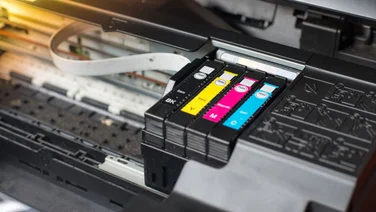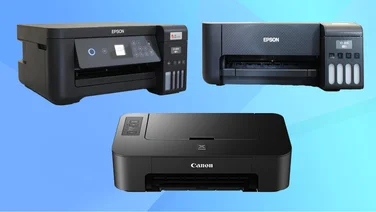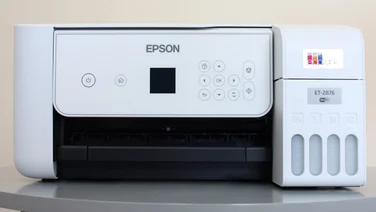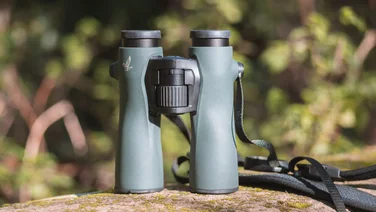To help us provide you with free impartial advice, we may earn a commission if you buy through links on our site. Learn more
- Nikon Coolpix P900 review: What you need to know
- Nikon Coolpix P900 review: Price and competition
- Nikon Coolpix P900 review: How did they make it so big?
- Nikon Coolpix P900 review: Design and layout
- Nikon Coolpix P900 review: Ergonomics and performance
- Nikon Coolpix P900 review: Video
- Nikon Coolpix P900 review: Image quality


















- Reasonable sharpness over a huge zoom range
- Wi-Fi and GPS
- The 2000mm zoom position is unwieldy
- Too much reliance on menu navigation
- Odd automatic ISO settings
The Nikon P900 was first announced in 2015 but it still holds the title of the longest zoom range on a consumer camera. Indeed, its 83x zoom range is equivalent to 24-2,000mm on a full frame camera, so it can stretch from wide-angle vistas to pictures of the moon filling the whole frame.
That sounds remarkable and that’s because it is. But how well does the camera perform in the real world and is it worth spending £480 on it in 2019? To see how the Coolpix compares to its closest rivals, scroll down and read on.
Nikon Coolpix P900 review: What you need to know
That zoom is the headline feature of course, but aside from that, what does the Nikon Coolpix P900 offer? Essentially, the P900 is what’s commonly referred to as a “Bridge” camera in the industry, because it sits in-between traditional compacts and SLRs.
As with other bridge cameras, it has a big zoom – the biggest around, in this case – and although shaped like an SLR, it has only a small 1/2.3in image sensor. That’s the same size as you’ll find in cheap compact cameras and modern smartphones.
Other key specifications include the ability to capture 16-megapixel images and 1080p video, and the camera also has a 3in articulated screen on the rear. It’s also got built in Wi-Fi and NFC for quickly transferring photos to your phone on the go and GPS so that all your snaps are geotagged.
READ NEXT: The best cameras of 2018, from CSCs to SLRs
Nikon Coolpix P900 review: Price and competition
That enormous zoom lens ensures that the P900 stands alone in the bridge camera market. Nothing else is quite like it; nothing even comes close, in fact. It’s worth noting, though, that at £449 inc VAT it’s quite pricey for this type of camera.
The Nikon Coolpix B500, for instance, is less than half the price at £219, yet still produces perfectly acceptable snaps and offers a usable zoom range of 40x. The Panasonic DC-FZ80, meanwhile, costs £120 less yet offers nearly as monstrous a zoom as the P900 at 60x.

Nikon Coolpix P900 review: How did they make it so big?
Record-breaking specs don’t always produce a well-rounded camera, however. So was this camera conceived through Nikon R&D engineering excellence, or a demand from the marketing department to produce an enormous zoom regardless of quality?
Two things dictate the effective zoom range of a camera: the lens and the sensor onto which it focuses light. The P900 uses a small 1/2.3in sensor, the same as is found in cheap compact cameras. That way, the lens dimensions can also be reduced. The lens actually has a focal length range of 4.3-357mm, but because it’s focusing light onto a much smaller area, it behaves like a 24-2,000mm lens on a full-frame camera.
That’s handy because it keeps the size down – on a full-frame camera, a true 2,000mm lens would be about the size of a small car. However, it also places high demands on the quality of the optics. Achieving sharp focus across the enormous 83x zoom range can’t be easy.
Nikon Coolpix P900 review: Design and layout
It’s still a bulky bit of glass, though, and the P900 as a whole is bigger and heavier than most consumer SLRs. It includes some handy features, such as an articulated screen, built-in Wi-Fi and GPS, but the upmarket features quickly run dry. There’s no RAW support and no hotshoe for flashguns and other accessories.
The electronic viewfinder has a reasonable 921,000-dot resolution, but the view is quite small and the insubstantial surround doesn’t block out sunlight sufficiently. I had to resort to cupping my eye with my left hand while holding the camera with my right. The chunky handgrip means one-handed operation is comfortable but it isn’t ideal for keeping the camera steady – a particularly important concern for telephoto shooting.
There are a reasonable number of buttons, but they’re not assigned to the functions you might expect. There are buttons for self-timer and Wi-Fi but not continuous mode, ISO speed or white balance. A customisable Fn button appears on the top and can be assigned to one of nine functions, but this isn’t enough for a camera that you’d want to use to capture moving subjects such as wildlife and sport.

There’s one button that’s very welcome, though. It’s located on the lens barrel, beside one of the two zoom controls (the other is around the shutter button). This button momentarily zooms out to help you locate and frame your subject. Release the button and the lens zooms back in again. This is particularly useful when shooting handheld at the long end of the zoom; you can frame someone’s head and shoulders from 50 metres away, but the slightest movement of the camera means the subject will go careering out of the frame.
The camera’s stabilisation is used while framing shots to help with composition, but while it reduced jitters, it’s inevitably tricky for the camera to differentiate between unintentional shake and deliberate but slight movement to compose the shot. As a result, carefully framing subjects at 2,000mm proved difficult, and that was just for static subjects. Tracking moving subjects at 2,000mm or even 1,000mm was completely out of the question.
Nikon Coolpix P900 review: Ergonomics and performance
Various other aspects of the P900’s operation proved frustrating. There’s an eye-level sensor to switch automatically between the viewfinder and LCD screen, but automatic switching is suspended while the temporary-zoom-out button is held down. I was frequently caught out by this while trying to locate a distant subject, first with my eyes and then with the camera’s viewfinder with the help of that button.
The 6.5fps continuous performance is decent enough in itself but it lasts for only seven frames, at which point the camera becomes inoperable for six seconds while it saves those shots. Autofocus performance is reasonable, typically taking around 0.3 seconds between pressing the shutter button and taking a shot. However, when reviewing shots I discovered that it often hadn’t focused on the part of the frame I had hoped for.

The Auto ISO mode behaved quite strangely, too. By default, it avoided using ISO speeds above 800 and instead used shutter speeds as slow as one second. Indoor shots at 1/8sec, ISO 450 means blurry moving subjects. There’s an option to customise the Auto ISO mode by setting the minimum shutter speed, and setting this to 1/30sec meant the ISO speed would rise to 1600 before the shutter speed dropped below 1/30sec, which worked well for indoor shots.
However, the next time I took the camera outdoors to capture telephoto shots, the P900 was shooting at 1/50sec, ISO 100. This led to hopelessly blurry shots due to increased camera shake at telephoto settings. Reverting to the default Auto ISO mode pushed the shutter and ISO speeds back to a more sensible 1/200sec and ISO 400.
The upshot here is that it’s best to shoot in shutter priority mode and adjust settings manually to avoid blurry shots. Some people will prefer to do this, but it shouldn’t be a requirement.
Nikon Coolpix P900 review: Video
As for video footage, that’s recorded at 1080p and frame rates from 25fps to 60fps. There’s no manual exposure option but it’s possible to lock the exposure while recording. Video quality was okay rather than great, with slightly coarse details and a smudged appearance to low-light clips.
As with photo composition, the optical stabilisation did a fine job of keeping handheld telephoto shots steady, but there was the occasional jolt of movement as the camera struggled to differentiate between accidental and deliberate movement.
^ The massive zoom means this blue tit fills the frame but it’s hard to keep it centred when shooting handheld. The zoom motor is quite noisy, too
^ Shooting into the shade pushes up noise levels, and the result is smudged details
^ The best results come at more modest zoom positions
Nikon Coolpix P900 review: Image quality
Photo quality was broadly similar. Colour reproduction was excellent with well-judged automatic exposure levels. However, close inspection revealed coarse details in brightly lit conditions and a smudged, grainy texture as the JPEG engine struggled with noise in low light. Photos generally looked excellent when resized to fit a computer monitor or tablet, but I had to manage the shutter speed carefully in low light to avoid blurry shots.
This camera is all about its 2,000mm (full-frame equivalent) maximum focal length and it’s important that the lens delivers the goods. Photos at that setting looked reasonably sharp but there was a lack of contrast and fine detail compared with shots at 1,000mm and shorter focal lengths. It was by no means disastrous, but combined with the significant difficulties involved in composing shots at 2,000mm, I rarely had the urge to use this setting.
Still, direct comparisons with the Panasonic FZ2000, each at their full zoom extensions, showed the P900’s 2,000mm lens and small sensor could capture more detail than the FZ2000’s more modest 480mm lens and bigger 1in sensor. The FZ2000 was sharper pixel-for-pixel, but after resizing the P900’s output down to the same size it came top for detail.

^ Details at ISO 800 and the full zoom extension (left) are pretty messy, but after reducing to 30% magnification (centre), there’s more fine detail than the same shot taken with the Panasonic FZ2000 (right) taken at its full 480mm telephoto zoom position

^ Here’s another example of the same effect, even after taking into account the Panasonic’s wider aperture that allows a slower ISO speed. There isn’t a huge amount in it, though

^ Sharp focus and superb colours in this wide-angle shot, although fine details are slightly smudged (1/2000sec, f/3.58, ISO 100, 24mm equivalent)

^ Another respectable result. There’s a bit of noise in the darker areas of the frame, by the black boots (1/500sec, f/4.5, ISO 100, 185mm equivalent)

^ Sharp focus on our subject against the blurred background, and exposure levels are spot on (1/400sec, f/5, ISO 100, 450mm equivalent)

^ The full 2,000mm zoom extension has let me frame distant subjects, but details look vague (1/500sec, f/6.5, ISO 200, 2,000mm equivalent)

^ Telephoto shots in overcast weather pushes the ISO speed up, but these skin tones at ISO 500 aren’t too shabby (1/60sec, f/5, ISO 500, 450mm equivalent)

^ The 2,000mm (equivalent) zoom position means shots of the moon virtually fill the frame (1/500sec, f/6.5, ISO 220, 2,000mm equivalent)

^ Here’s one of the best shots I got at 2,000mm. Evidently, sharp details are possible (1/500sec, f/6.5, ISO 250, 2,000mm equivalent)

^ A rare sighting of a green woodpecker, and a great chance to take advantage of the massive zoom. Sadly, all 52 shots I took were focused in front or behind the subject (1/200sec, f/6.5, ISO 400, 2,000mm equivalent)

^ I’ve set the shutter speed to 1/250sec here to freeze motion. The resulting fast ISO speed means detail-smudging noise reduction (1/250sec, f/6.5, ISO 1600, 2,000mm equivalent)

^ This is a better result in similar light with slower shutter and ISO speeds. Focus looks sharp but there are clipped highlights on the swan’s back, with a halo of purple fringing just above (1/125sec, f/6.5, ISO 720, 2,000mm equivalent)
Nikon Coolpix P900 review: Verdict
There are various ways to evaluate the P900. To match its 2,000mm equivalent focal length by any other means would involve spending more than £5,000 on a cropped-sensor SLR, 800mm lens and 2x teleconverter. However, take the P900’s relatively low 16-megapixel resolution and slightly soft details into account and you could capture significantly more detail – and have a far more agreeable shooting experience – with a camera such as the Nikon D3400 and Sigma 150-600mm lens, whose total cost is £1,220.
The other thing to bear in mind is that (equivalent) focal lengths beyond about 600mm are only useful for static subjects. It simply isn’t realistic to track moving subjects with such a narrow field of view. With the P900, even static subjects can be hard to frame when shooting handheld. The lens is technically impressive but, in practice, it doesn’t make a huge amount of sense, especially when you factor in the lack of RAW and the hard-to-reach controls. I’d be just as happy with the much more affordable Nikon B500.







